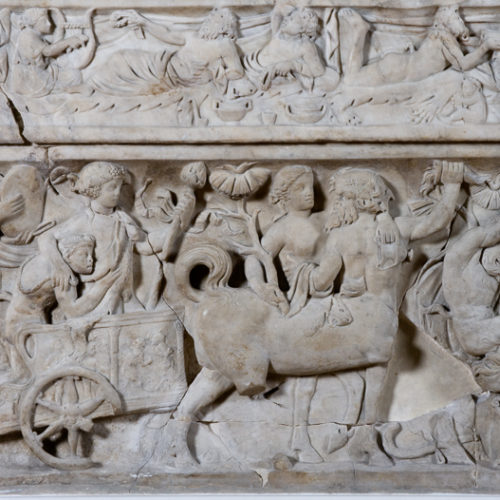Teaching activities: videos, activity ideas and information about objects
This beautifully decorated artefact is an example of how the ancient Greeks used motifs, symbols, mythological figures and Gods and Goddesses to retell stories.
Looking closely at this museum artefact we can learn about ancient Greek beliefs, and what was important to them.
We can also investigate what influenced culture and the western world.
- How do you think this object was made? What tools might the artist have needed?
- Look at all the people and animals on this object. What different activities are they doing?
- What story is unfolding here? Do you think its real or mythological?
● A frieze can be read left to right like a book. Draw your favourite section of the panel and annotate what would happen before and after in your story. What else could you add that you have learnt about ancient Greece?
● Marble has been an important material for humans for many thousands of years, particularly ancient Greeks. What are its properties? How was this artefact made? Why are some areas more fragile to breaking than others?
● Ancient Greek Gods and Goddesses can be identified by symbols and motifs. Create a mind map of four different Gods you have learnt about, then create your own Emoji chart of symbols for your favourite Gods.
- The museum calls this object the Pashley sarcophagus, named after the English traveller Robert Pashley. Pashley transported the coffin back to England and donated it to the museum in 1835. Although naming things after the benefactor is commonplace, you could ask your class what they think about this. Who is most important in the history of this object?
- This object is a coffin. Be sensitive to those in your classroom community who have recently experienced any kind of bereavement, or who may feel anxious discussing these topics. When we talk about this object in the museum, we sometimes use the party scene to discuss the celebration of life.
- Although we are using this object to discuss ancient Greece, it was actually made in ancient Rome in AD 101. The scenes are of ancient Greek mythology, which had been made popular at the time by emperor Hadrian.
